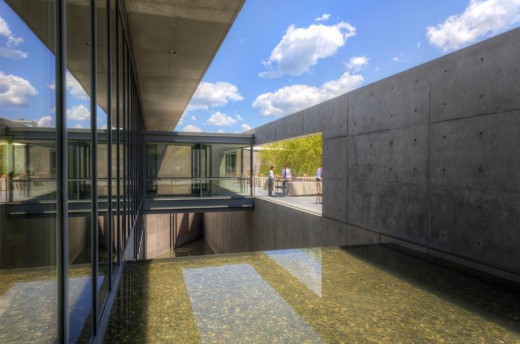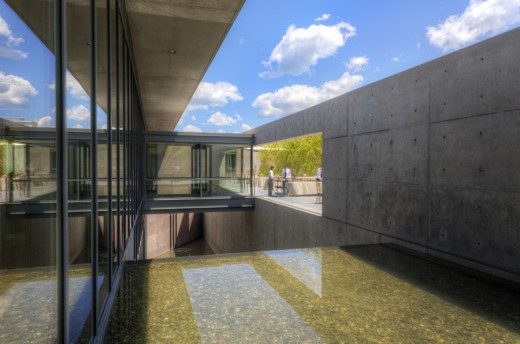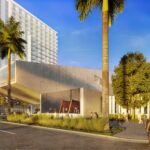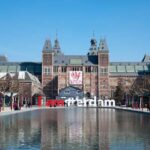The Clark Art Institute in Williamstown, Berkshire County Building Images, Architect, MA Architecture
The Clark Art Institute
Williamstown Campus Development Massachusetts design by Tadao Ando Architect & Associates Architects, USA
post updated November 12, 2023 ; Nov 8, 2015 ; Oct 24 + 23, 2014
Location: Williamstown, Berkshire County, northwest Massachusetts, USA
Architect: Tadao Ando Architect & Associates, Architects
Museum Building and Manton Research Center Renovation
Design: Selldorf Architects, New York
The Clark Art Institute in Williamstown
The Clark Art Institute in Williamstown opens its expanded and reconceived 140-acre campus on July 4, 2014. The multi-phase project, nearly fifteen years in the making, reconceptualizes the visitor experience of the Clark and represents the most significant transformation of the Institute since it opened in 1955.
Combining the talents of four noted architects, the project unites the new Clark Center—designed by Tadao Ando Architect & Associates, Osaka, Japan—with the renovated Museum Building and Manton Research Center designed by Selldorf Architects, New York. These buildings surround a new one-acre reflecting pool, which is the highlight of a dramatic rethinking of the Clark’s landscape of trails and walkways reconceived by Reed Hilderbrand Landscape Architecture, Cambridge, Massachusetts. Gensler, New York is the Executive Architect and sustainability consultant for all phases of the project.
The Clark Art Institute | Connecting Point | Web Premiere Film on YouTube
The project adds more than 13,000 square feet of gallery space to the campus, supporting the Clark’s expanded collection and exhibition programs, and establishing the Institute as a leader in best practices for sustainability and energy efficiency.
“The project advances the Clark’s dual mission as both an art museum and a center for research and higher education,” said Director Michael Conforti. “Since developing our master plan nearly fifteen years ago, we have worked diligently to connect our program and support spaces with our extraordinary landscape, all with the goal of best serving the thousands of people who come from all over the world to visit the Clark each year. What now looks simple and so logical, has been achieved through a complex and environmentally sensitive design and construction program that unites many disparate parts.”
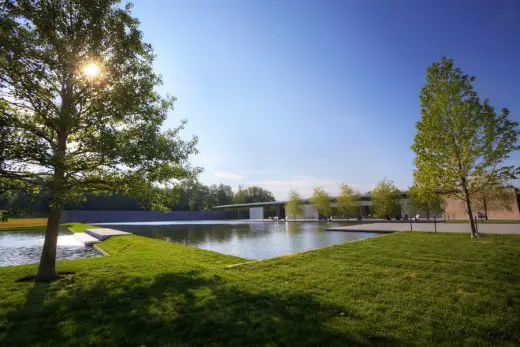
Elements of this phase of the Clark’s project include:
The new 42,600-square-foot Clark Center designed by Pritzker Prize-winning architect Tadao Ando, which includes more than 11,000 square feet of gallery space for special exhibitions; a multi-purpose pavilion for conferences, lectures, and events; new dining, retail, and family spaces; and an all-glass Museum Pavilion that creates a new entrance to the original Museum Building.
The expansion and renovation by Selldorf Architects of the original Museum Building, which includes the addition of more than 2,200 square feet of gallery space; a careful restoration of the existing galleries; installation of new lighting and environmental controls; and the re-establishment of a west-to-east orientation for the visitor.
A sweeping redesign of the Clark’s grounds by Reed Hilderbrand Landscape Architecture, which underscores the Clark’s commitment to environmental stewardship of its grounds by significantly enhancing sustainability initiatives across the campus and integrating green design practices. Key elements of the program include creation of a three-tiered reflecting pool that is both the focal point of the redesigned campus and part of an advanced water management system that reduces the Clark’s forecasted potable water consumption by approximately 50 percent, or one million gallons annually; upgrades to and expansion of walking trails; green roof systems; planting of 350 new trees on the site; and creation of a new entry drive and parking areas that feature water permeable surfaces feeding into a rainwater collection system.
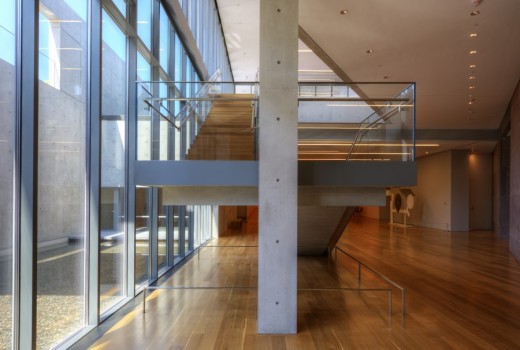
“The addition of special exhibition and education space in the new Clark Center, coupled with the renovation of our Museum Building, enables us to present our collection and expand the provocative exhibitions for which the Clark is noted in new and interesting ways,” Conforti said. “On the campus, Reed Hilderbrand’s work has brought renewed ecological health to the land, helping to improve our significant natural assets. From the earliest days of our planning process, Gensler has integrated the work of all the design teams, guided us on sustainability, and provided the overarching framework that such an ambitious undertaking requires.”
Renovation of the Manton Research Center, home to the Clark’s library and Research and Academic Program, is ongoing, following a recent decision to expand the scope of work on the project to include installation of a new architectural skylight system over the central lobby area. The building’s former lobby will be converted into a new public reading room, which will be significantly enhanced by the natural light that will permeate the space through the new skylight. The renovation is designed by Selldorf Architects.
The Clark’s library and auditorium, both located in the Manton Research Center, will remain operational throughout the summer. The auditorium will be the site of a variety of events, lectures, and performances throughout the summer. Both the east and west entrances will be accessible. A bookstore will be open in the east lobby, offering a wide range of Clark publications, art books, and reference materials. The new spaces in the Manton Research Center, including the Manton Study Center for Works on Paper and adjacent gallery space, will become available on a rolling schedule beginning later in 2014.
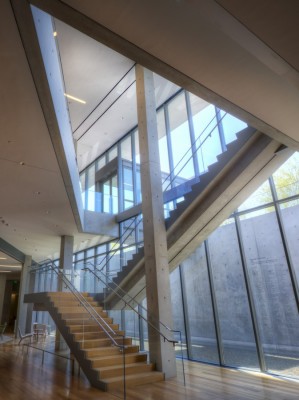
The Clark’s expansion project, which began with the 2001 announcement of a master plan study by Cooper, Robertson & Partners that reconceived the campus, also includes:
– Construction of the Lunder Center at Stone Hill (formerly known as Stone Hill Center) housing galleries that allow the Clark to present smaller exhibitions including non-Western and twentieth-century art; the Hunter Studio art classroom space; a seasonal terrace café; and the Williamstown Art Conservation Center’s facilities (completed in 2008)
– Creation of more than two miles of public walking trails traversing the Clark’s hillsides and woodland areas and connecting the main campus to the Lunder Center site
– Demolition of the Clark’s former physical plant building to make way for the new Clark Center and reflecting pool
– Construction of new below-grade support facilities, including a loading dock; physical plant; art transit, and storage spaces; and a food service kitchen (completed in 2011)
– Upgrades to all major utilities and installation of a new series of geothermal wells across the campus
– Planting of a total of 1,000 trees on the Clark’s campus (including 350 in the final phase)
In its inaugural summer, the Clark is presenting several special exhibitions: Cast for Eternity: Ancient Ritual Bronzes from the Shanghai Museum and Raw Color: The Circles of David Smith, both opening on July 4, and Make It New: Abstract Painting from the National Gallery of Art, 1950–1975, opening August 2.
The Clark’s noted permanent collection has been reinstalled in the Museum Building, which features new gallery spaces for American paintings and European sculpture and decorative arts. Seventy-three of the Clark’s French paintings recently returned to the Institute following a three-year international tour to eleven cities that drew more than 2.6 million visitors.
“We are very excited to welcome the public this summer. The Berkshires is a region noted internationally for its great beauty and its extraordinary cultural venues,” Conforti said. “The Clark will be a place of discovery—inside and out—that visitors will want to explore. With the many other museums in the region and the wonderful performances at Tanglewood and the Berkshires’ many theater and dance companies, we are ready to engage the world in discovering one of the nation’s most exceptional artistic and cultural communities.”
The Clark’s opening celebration culminates Williamstown’s traditional July 4 festivities. At 1 pm, an opening ceremony will be held at the new main entrance to the Clark Center, after which the doors will open to the public. Galleries are open until 7 pm on July 4 and admission is free. A free outdoor concert at 7:30 pm, followed by a fireworks presentation at dusk, will highlight the Independence Day celebrations on the campus.
Clark Center
The Ando-designed stone, concrete, and glass Clark Center, situated northwest of the Museum Building, is the new centerpiece of the Clark’s campus and serves as its primary entrance. The two-story building overlooks the three-tiered reflecting pool, designed by Tadao Ando and Reed Hilderbrand, integrating indoor and outdoor spaces and creating a stunning visual connection to adjacent buildings and the woodland surroundings. The building provides 11,000 square feet of special exhibition space in galleries located on both floors of the building. The lower-level galleries are partially situated beneath a green roof that forms an exterior courtyard at the main entrance to the facility.
The lobby overlooks the reflecting pool and is highlighted by a dramatic glass and concrete stairway that accesses the galleries, dining, and family areas located below. The Clark’s primary retail facility is located on the building’s first floor, with interiors designed by California-based wHY Architecture and Design, led by principal Kulapat Yantrasast, who also designed Café Seven, the Clark’s new dining facility. A granite and glass corridor links the Clark Center to the Ando-designed Museum Pavilion, a glass structure that creates a light-filled transitional space connected to the Museum Building’s new west-facing entrance.
“I like to accomplish art spaces that inspire viewers and evoke their creativity and freedom of thinking,” said Ando. “I have always been in awe of the Clark’s unique sense of place in nature. In both the Clark Center and Lunder Center, I have tried to express a deep respect for the landscape outside and an equal reverence for the art inside. It is critical that the art speak for itself and that viewers experience it in their own way.”
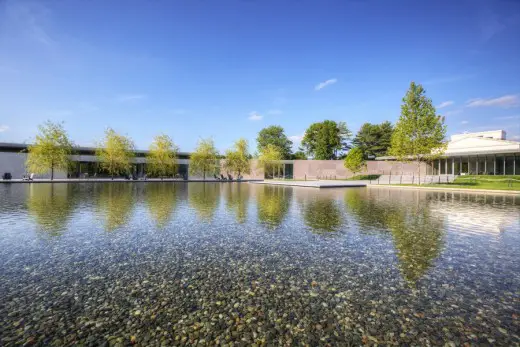
Museum Building
Selldorf Architects’ renovation of the Clark’s original Museum Building adds more than 2,200 square feet of new gallery space, a fifteen percent increase that creates a total of 17,700 square feet of space for display of the permanent collection. The new design maintains the original domestic character of the building, with views of the adjacent landscape and natural light that comes in from both side windows and skylights. Selldorf’s adaptation of former office and storage areas into new galleries enables the Clark to present more of its collection in originally scaled galleries.
Circulation has been greatly enhanced in the renovation by reorienting the building to its original east-west axis and creating a new ease of access to perimeter galleries. Selldorf worked closely with the Clark’s curatorial team on the selection of wall colors and finishes for the reinstalled galleries and created elegant new casework and vitrines for the decorative arts collection along with custom-designed furniture. New environmental systems and lighting work together to bring the building to the highest museum standards.
Manton Research Center
Selldorf’s design for the renovation of the Manton Research Center—a 1973 building designed by Pietro Belluschi with The Architects Collaborative—reinforces the building’s purpose as a center for research and academic activities, and as home to both the Williams College Graduate Program in the History of Art and one of the largest art history research libraries in the country. A key element of the ongoing renovation is the transformation of the former visitor services courtyard to a new reading room, bringing the public closer to the study of art. Selldorf also has designed a new Manton Study Center for Works on Paper on the main level with an adjacent gallery for regular exhibitions of the Clark’s prints, drawings, and photography collection, as well as a gallery space dedicated to the Manton Collection of British Art. Other highlights include a new bookstore and coffee bar.
“By distilling the essential character of these two buildings with very different architectural vocabularies, we are able to create a wholly revamped and refreshed Museum and Manton Research Center,” said Annabelle Selldorf, principal of Selldorf Architects. “The design changes may appear subtle to some, but required precision and restraint at all times. The result will better serve the Clark’s dual mission and enhance the visitor experience of the permanent collection.”
Landscape
Reed Hilderbrand Landscape Architecture, led by principal Gary Hilderbrand, worked in close collaboration with Tadao Ando to articulate a dramatic new landscape design for the Clark that achieves new levels of environmental sustainability and creates an exceptional visitor experience. The unifying element of the landscape is the tiered reflecting pool that is the focal point of the new main campus and unites the three surrounding buildings with the natural setting. The reflecting pool is at the heart of an integrated hydrology program that significantly reduces the Clark’s consumption of natural resources and enhances its land management practices. Other key elements of the design are substantial new plantings of native species, including some 1000 trees and the concurrent removal of invasive plants; upgrades to the existing network of walking paths and trails; a new entrance drive; and landscaped parking areas that accommodate 398 vehicles.
“Our design for the final phase of the campus brings the landscape into exemplary alignment with the Clark’s commitment to stewardship,” said Gary Hilderbrand. “The beauty of the reflecting pool and surrounding lands is certainly important, but we’re extremely satisfied with the knowledge that we have evolved, over the last ten years, a complex landscape that reflects its cultural roots in the Northern Berkshires and amplifies the natural processes that shape its topographic and spatial beauty.”
Inaugural Special Exhibitions
In addition to the reinstallation of the Clark’s permanent collection in reconfigured galleries, the July 4 opening will include the presentation of two special exhibitions:
Cast for Eternity: Ancient Ritual Bronzes from the Shanghai Museum
On view in the West Pavilion gallery of the Clark Center, Cast for Eternity presents some of the finest surviving examples of early bronze work from the Shanghai Museum’s exceptional collection. These rare bronze works represent the finest quality craftsmanship and artistic accomplishment from China’s Bronze Age. This exhibition continues the Clark’s partnership with China’s Ministry of Culture and a number of Chinese cultural institutions, originally inspired by the centennial commemoration of Sterling Clark’s early scientific expedition to northern China. The curatorial team, led by Tom Loughman, associate director of the Clark, includes representatives from the Clark and the Shanghai Museum. Cast for Eternity is organized by the Shanghai Museum and the Clark Art Institute, and is supported by the E. Rhodes and Leona B. Carpenter Foundation and the Asian Cultural Council. The exhibition is designed by Selldorf Architects.
Raw Color: The Circles of David Smith
Installed in the intimately scaled galleries and surrounding outdoor spaces of the Clark’s Lunder Center, Raw Color: The Circles of David Smith presents a selection of works by one of the most celebrated sculptors of the twentieth century. The exhibition marks the first time in more than thirty years that all five of the key sculptures from Smith’s Circle Series (1962–63) are shown together. Its presentation on the Clark’s Berkshires campus creates a setting that is similar to (and less than one hundred miles away from) Smith’s Bolton Landing, New York home where the artist created and installed them. This exhibition is curated by David Breslin, associate director of the Clark’s Research and Academic Program and associate curator of contemporary projects.
On August 2, the Clark opens Make It New: Abstract Painting from the National Gallery of Art, 1950–1975. The exhibition examines the different paths taken by abstract painting in the immediate postwar period. Drawn largely from the National Gallery of Art’s exceptional collection, the exhibition features some of the greatest works of mid-century abstract art:
Jackson Pollock’s iconic painting Number 1, 1950 (Lavender Mist), along with key paintings by Mark Rothko, Barnett Newman, Jean Dubuffet, Cy Twombly, Helen Frankenthaler, Jasper Johns, and Yayoi Kusama. Ranging from experiments with color and geometry to works in cloth, wax, and other materials, Make It New looks at the ways in which artists continued to expand the definition of painting during this time. This exhibition is organized by the National Gallery of Art, Washington, in collaboration with the Clark, and is curated by Harry Cooper, curator of Modern Art, National Gallery of Art and David Breslin, associate director of the Clark’s Research and Academic Program and associate curator of contemporary projects.
The Clark Center aims to achieve LEED – New Construction Silver Certification from the United States Building Council (USGBC). Funding for this project has been provided by the Massachusetts Cultural Facilities Fund: a program of the Commonwealth of Massachusetts, administered through a collaborative arrangement between MassDevelopment and the Massachusetts Cultural Council.
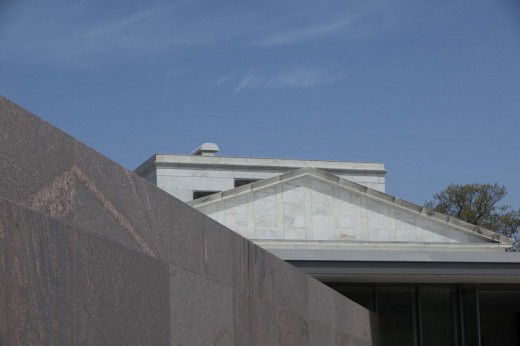
The Clark Art Institute – Building Information
The Clark Art Institute is in its final phase of a transformational campus expansion program that adds new facilities to support the growth of museum and academic programs, enhances the visitor experience, improves circulation throughout the campus, and creates new levels of sustainability across its 140 acres. The program focuses on providing superior facilities for the benefit of visitors and scholars and underscores the Clark’s environmental stewardship of its grounds.
Project Overview
The project was initiated in 2001 after the creation of a master plan by Cooper, Robertson & Partners that reconceived the campus. Accomplished through a phased approach, the project includes:
Museum Leadership: Peter Willmott, Chairman, Board of Trustees
Michael Conforti, Director
Architects: Tadao Ando Architect & Associates, Osaka, Japan (Clark Center, Lunder Center at Stone Hill, physical plant)
Selldorf Architects, New York, New York (Museum Building and Manton Research Center)
Reed Hilderbrand Landscape Architecture, Cambridge, Massachusetts (Campus Landscape, Circulation, Tiered Reflecting Pool)
Gensler, New York, New York, Executive Architect and Sustainability Consultant
Groundbreaking: March 2006 (project launch at the Lunder Center at Stone Hill)
Opening Date: The Museum Building and the Clark Center open July 4, 2014; the Manton Research Center opening will be celebrated in spring 2015
New Facilities: The project adds a total of 97,700 square feet of space to the Clark’s campus, including the Clark Center, the Lunder Center, and the physical plant facility.
Overall campus totals 280,000 square feet
Clark Center
o 42,560 square feet
o Two levels: one floor above grade, one floor below grade
o 11,070 square feet of new special exhibition space
o Three special exhibition galleries on lower level
o Multi-purpose West Pavilion—overlooking the reflecting pool—for special exhibitions, conferences, lectures, or events
o New main entrance and visitor reception area
o Glass and granite concourse links to 2000-square-foot glass Museum Pavilion which creates a new entrance to Museum Building
o New café and dining area
o New Museum Store with curated product selection
o Flexible space for education, family, and community programs
o Outdoor terraces surrounding the three-tiered reflecting pool
Museum Building
o 43,770 square feet
o Designed by Daniel Perry and opened in 1955
o Gallery space expanded by 2210 square feet through renovation—a 15 percent increase
o New American and decorative art galleries
o Renovation of all existing galleries
o Restoration of the building’s original east/west orientation
o New museum entrance
o New conservatory space with interactive interpretive tools
o New lighting and climate control systems
o New casework and gallery furniture
o Renovated spaces for staff and support functions
Manton Research Center
o 107,460 square feet
o Opening will be celebrated in spring 2015
o Designed by Pietro Belluschi, The Architects Collaborative, and opened in 1973
o New Manton Study Center for Works on Paper and adjacent gallery
o Public reading room in central courtyard
o Renovated gallery space for the Manton Collection of British Art
o New art bookstore
o Coffee bar
Lunder Center at Stone Hill
o 32,000 square feet
o Opened 2008
o 2790 square feet of gallery space
o Studio art and classroom space in Hunter Studio
o Outdoor terrace with casual dining facilities
o Houses laboratories, studio spaces, and office and meeting space for the Williamstown Art Conservation Center
Physical Plant
o 23,140 square feet
o Opened 2012
o Building is completely below grade, accessed through tunnels that connect to other campus buildings
o Replaces former freestanding 8,750-square-foot maintenance building that was demolished
o New loading dock
o Art transit and storage facilities
o Art preparation facilities
o New foodservice kitchen
The Clark Art Institute – images / information received 231014
Tadao Ando Architect & Associates
Selldorf Architects, New York City
Location: Williamstown, Massachusetts, USA
Massachusetts Architecture
Massachusetts Architectural Designs – recent selection from e-architect:
American Architectural Designs
American Architectural Designs – recent selection from e-architect:
Comments / photos for the The Clark Art Institute in Williamstown, Massachusetts design by Tadao Ando Architect & Associates Architects page welcome.

